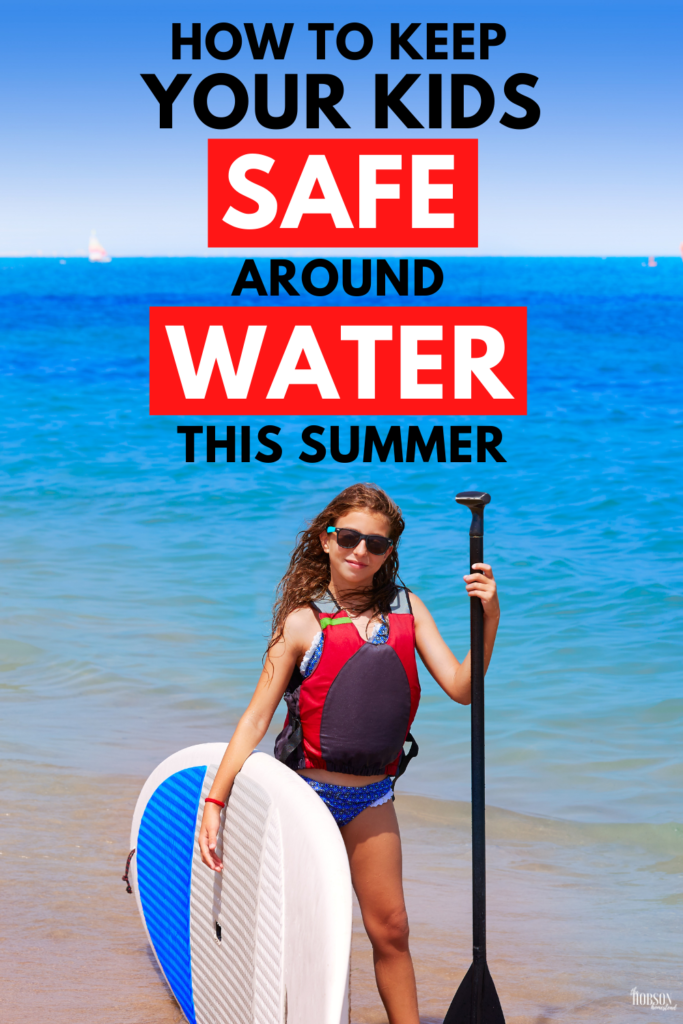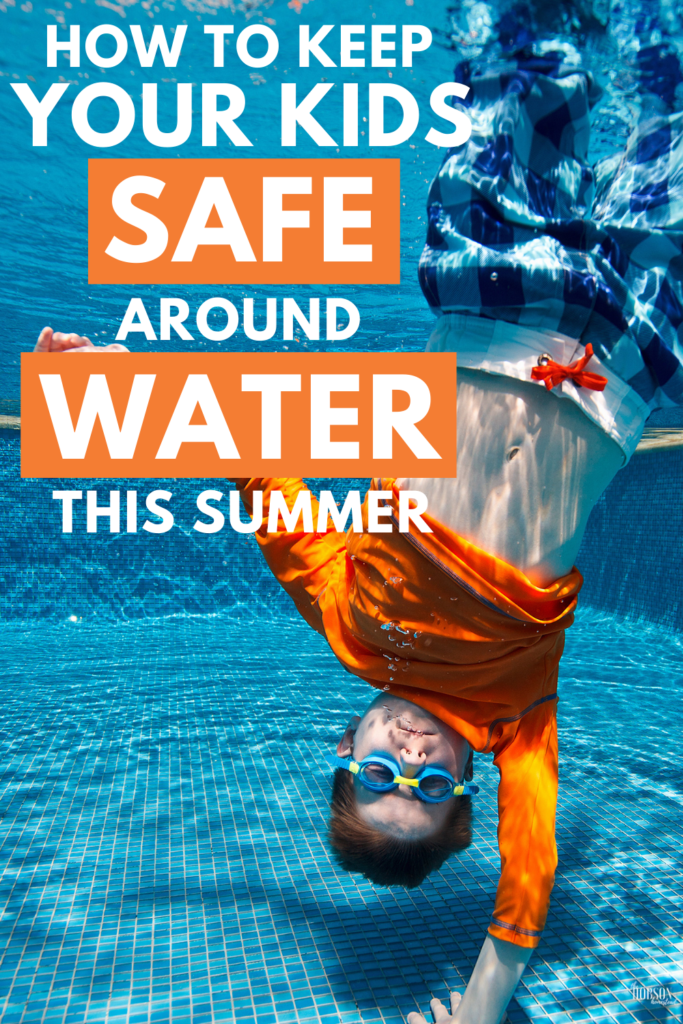Follow these 8 water safety rules for kids to ensure they stay safe around the pool, ocean and lake, while still having fun this summer.
As parents, we’ve all heard horror stories about kids around water. In the U.S., more than 900 children drown every year—most during the summer months. Nearly three quarters of drownings happen to toddlers ages 1-3 and 65% of those are boys. Younger children have the greatest chance of drowning in a swimming pool, while older children often drown in open bodies of water, such as lakes or the ocean.
No matter your child’s age, it’s important to impletement water safety rules for your family. Teach your little kids the rules early, so they become second nature as they get older. And even though older kids and teenagers make buck up at having water safety rules, stay the course and take seriously your role as parent and protector.
8 WATER SAFETY TIPS FOR PARENTS
1. Never multitask near water.
This tip seems so obvious, but I think it’s the one thing that get us parents in trouble the most when it comes to our children’s safety. Distraction as a parent is dangerous near water. Don’t read books or magazines, send long texts on your phone, prep lunches, take a bathroom break, etc. unless you appoint another adult to watch your children. And just remember, no one knows your children’s tendencies as much as you do or will watch your children as well as you do.

2. Use only coastguard-approved flotation devices on a boat.
Puddle jumpers are coastguard-approved and have made parent life so much easier since they are inexpensive and readily available. One great benefit of puddle jumpers is that they don’t tend to ride up to a child’s chin the way life jackets can. But, if your child is one who tends to defy the rules, I would caution against a puddle jumper. They are much easier and quicker for a child to wrangle out of than a child life jacket, which often has a leg strap to better keep the life jacket in place. Puddle jumpers now come with shoulder straps, which are a great option for wiggly toddlers.
3. Make kids put on flotation devices before walking to the lake, pool, beach, etc.
This rule is especially crucial if you have multiple young kids since it’s impossible to hold that many little hands as you are carrying towels, bags, coolers, etc. Even if your kids run ahead of you into the water, you will be at ease knowing they are safe in their flotation device.
Related: The Best Toys to Pack for Vacation

4. Enroll your child in swimming lessons, but don’t trust that they are independent swimmers.
My 6 year old spent three months on a swim team this spring, but he’s not even close to being an independent swimmer. Though he is able to swim without a flotation device in a pool, I am adamant that he wear one in the lake, where the water is dark and deep, as well as the ocean, which has undercurrents. But even when he is pool swimming, it’s crucial that he is carefully watched. Kids his age tend to push themselves so hard swimming that they unknowingly become exhausted and it’s hard for them to catch their breath.
5. If you see your child getting winded while swimming, mandate a break from the water.
Following up on tip No. 4, if I see my kids swimming with prolonged heavy breathing, regardless of whether they are in a puddle jumper, I make them sit out of the pool for five minutes to catch their breath. Large pools with lifeguards do these breaks well, instituting adult-only swims 10-15 minutes every hour. Though my kids hate these breaks, it requires them to rest out of the water.
6. Don’t rely only on the lifeguard.
As I mentioned earlier, no one will watch your child as well as you do—even if that is what they are paid to do. Lifeguards, especially those at larger pools, could be keeping an eye on dozens of kids at one time, scanning back and forth across the pool. If your child is ever in trouble in the water and you are watching him, chances are you will pick up on it twice as fast as the lifeguard.

7. Ensure an adult is within reach of every child on a boat and enforce that kids sit on their bottoms.
Most kids (mine included) love to sit at the front of the boat and wait for a bounce when we hit a large wake. But always make sure that an adult is sitting within arm’s reach of all kids and require the kids to sit on their bottoms. Small children always have a chance of getting bounced out of the boat with a large wake.
8. Remind your kids of your water safety rules every time you go near water.
Every time you go near water, get your kids to audibly confirm that they understand what’s expected of them. Whatever your most important rules—Puddle jumper always on, always an adult with them, no running/horseplaying, stay closeby at beach, etc.—it never hurts to repeat them to remind your kids and set expectations before they are around the water.
Do you have any other water safety tips for kids?


